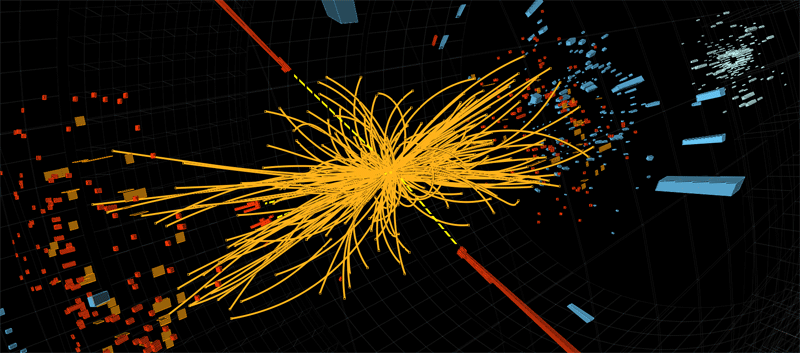Scientists working on the projects CMS and ATLAS presented the results of their research, which confirmed that the new particle decays into two photons, indicating that it is a boson in the mass region around 125-126 GeV, the heaviest boson ever found.
The new particle is consistent with the expectations for the Higgs boson but scientists still cannot say with a hundred percent certainty that this is really the long anticipated “God particle.” It is important to emphasize that the results of both the CMS and ATLAS projects have a 5 sigma value on the scale that physicists use in order to indicate the reliability of a study, i.e., the probability that the observation is the result of random fluctuations of known processes and not an indication of a new particle is less than one in three million.
Participants in the CMS experiment included two scientists from the Ruđer Bošković Institute (RBI), Dr. Vuko Brigljević and Dr. Krešo Kadija, together with the research assistants Senka Đurić, Srećko Morović and Jelena Luetić. A group from the University of Split worked on the same experiment under the guidance of Prof. Ivica Puljko. This group actively works on detecting the decay of the Higgs boson into two Z bosons, which is an exceptionally significant part of this discovery.
The RBI scientists in the CMS collaboration have the leading role in measuring the processes in which pairs of boson particles are formed. Such processes represent significant background in the search for the Higgs boson, the precise measurement of which is an important factor. The research assistants Senka Đurić and Srećko Morović are currently completing their doctorates on the first measurements of such processes, while Dr. Vuko Brigljević is the leader of the CMS group that is responsible for such measurements.
“RBI scientists also participated in various aspects of the CMS experiment that made these results possible. The research assistant Srećko Morović is currently one of the main persons responsible for the large computer system in which selected collisions are chosen and recorded, a task of key importance for the success of the experiment. In addition, the group from the RBI has begun to participate in a project involving the central silicon pixel detector, which consists of over 60 million pixels and permits highly precise tracking of proton collisions. The research assistant Jelena Luetić, who joined the group last year, is already actively participating in the analysis an operation of the CMS pixel detector.
The results presented today at CERN are based on data collected in 2011 and 2012. The final results will be published in late July.
The next step will be to determine the precise nature of the particle and its significance for understanding the universe. Scientists believe that this particle could be the key for understanding the 96% of the universe that remains obscure.
The Director General of CERN, Dr. Rolf Heuer, said that this discovery is a turning point in our understanding of nature. “The discovery of a particle consistent with the Higgs boson opens the way to more detailed studies, requiring larger statistics, which will pin down the new particle's properties, and is likely to shed light on other mysteries of our universe,” said Dr. Heuer.
This historical scientific discovery could be the missing piece from the Standard Model (SM) of particle physics—mathematically the most precise theory of the interaction within the system of the smallest particles of matter—elementary particles. In the past five decades, over 30 theoretical and experimental physicists have been awarded the Nobel Prize for research directly connected with the SM.
The theoretical assumption of the existence of the “God particle” was proposed in 1964 by the physicists Peter Higgs, Francois Englert and Robert Brout. The search for it is being conducted in the Large Hadron Collider (LHC), the largest scientific instrument in the world, which helps scientists reconstruct the conditions that existed in the first moments after the Big Bang, which occurred 13.7 billion years ago.


